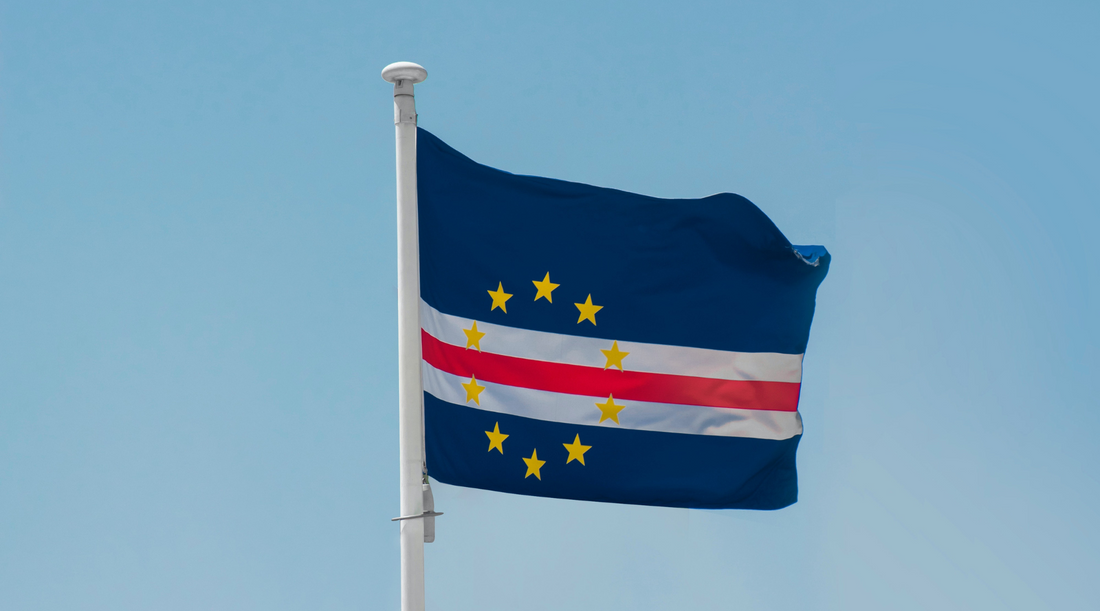It startled us when we stumbled upon some random Reddit post saying Cabo Verde was one of the least known African countries. We get that Reddit isn’t the most credible source, but something tells us they might be onto something. Like c’mon, when was the last time you heard anyone speak of Cabo Verde as anything other than a travel destination, if that? We’ll wait. To take the edge off our own fears, we’re going to take advantage of Black History Month’s conclusion and give you a minor glimpse at the source of our art.

Nick Fewings/Unsplash
First thing’s first, Portuguese is the official language of Cabo Verde. So yes, secret’s out: Cabo Verde was a colonized and slavery stricken country for many years. To make things even stickier, extremely local historians of the country affirm that slaves were purchased with Conta Di Ojo beads. These are the very same beads that are used in our “CaboVerdeBelieve” collection. But wait, we can explain.

After meeting with a Cape Verdean native and local historian, they confessed that the beads were used for the aforementioned. This means that these beads were recurring characters in the grand scheme of African slavery in our country. It wasn’t until hundreds of years later that Cape Verdeans were able to take the very thing that contributed to their oppression and turn it into a symbol of divine protection.

Now, in modern day, the beads are regarded as protectors of bad spirits. There is one stipulation, though: The beads must be worn in odd numbers. For example, the protection powers only work if you wear a ring with a single bead. On the other hand, if your ring has two beads then you’re out of luck, bud. Note that wearing the beads incorrectly doesn’t mean you’ll be cursed. In lieu, it signifies that the power of the bead is not activated and thus the protection seeked is at a standstill. The bead is a testament to the power of Black talismans worldwide.

Engin Akyurt/Pexels
There are many claims proposing that a number of Cape Verdeans were taken to the Americas as slaves. Others suggest that black slaves from the Americas were taken to Cabo Verde as well. We’re honestly not sure as many credible sources are in opposition to each other. What we do know, however, is that there are more Cape Verdean descending individuals living outside of Cabo Verde than there are inside of it. The migration can be attributed to our country’s lengthy association to having a troubled economy.

Schooner Ernestina-Morrissey Association
Possibly arriving in the Ernestina, most Cabo Verde immigrants are found in Massachusetts and Rhode Island. Here, many of our predecessors found work in maritime related fields – for less pay, of course. Nonetheless, that hard work has shaped the mild blossoming of a hidden society that is growing in population.

Rhode Island Historical Society
When the demand for maritime work dwindled, many Cape Verdeans found themselves taking on factory work and other seemingly improbable careers. This resulted in them becoming Rhode Island’s first people of color to acquire jobs in law enforcement and firefighting. Eventually, this led to slow, but certain civic engagement. Now, we see Cape Verdean Americans becoming doctors, lawyers, and even celebrities.
For many years, there was hesitancy to assimilate to African American culture, as religion, language, and nationalism were distinct elements of being Cape Verdean. However, during the American Civil Rights movement, Cape Verdean immigrants found themselves in solidarity with African Americans and began to explore their identity as Black Americans as well. It’s important to note that Portuguese’s influence has long complicated the identity structure of Cabo Verde, which translated itself into denial of American blackness, which is deemed distinctive from African blackness. Still, newer generations of Cape Verdeans tackle that narrative and assert the beauty of blackness across all boards.
Family has always been a vital aspect of Cape Verdean culture. In America, it is believed that first generation Cape Verdean families had at least 4 children. While families with 2 children are the norm now, the relevance of the household has not changed. The emphasis on big families contributes to the collaboration of each family member’s merits to alleviate the stresses of American society. Also, religion, especially Catholicism, teaches that a big family is a blessing, rather than a curse. Concepts like Birth Control and Abortion were taboo and frowned upon in these earlier generations. Having elders to refer to and care for emphasizes the security for both age groups. Elders are expected to extend their blessings to younger generations and younger individuals are presumed to take care of elders when need be. This feeds the idea of belonging that is desperately chased in any culture, but emphasized in America.

New Bedford Whaling Museum
While our culture is sometimes reliant on hearsay to fill in the gaps of information deprived from us, we are certain that knowledge of our folklore and contributions to the American narrative and economy will increase its visibility.
So yes, the Reddit post wasn’t entirely nutso, but what we hope to have provided is a sense of curiosity for the still enigmatic elements of Cabo Verde. Here, at Alzerina Jewelry, we are undeniably proud to celebrate Black History Month.

David Englund/Pixabay

